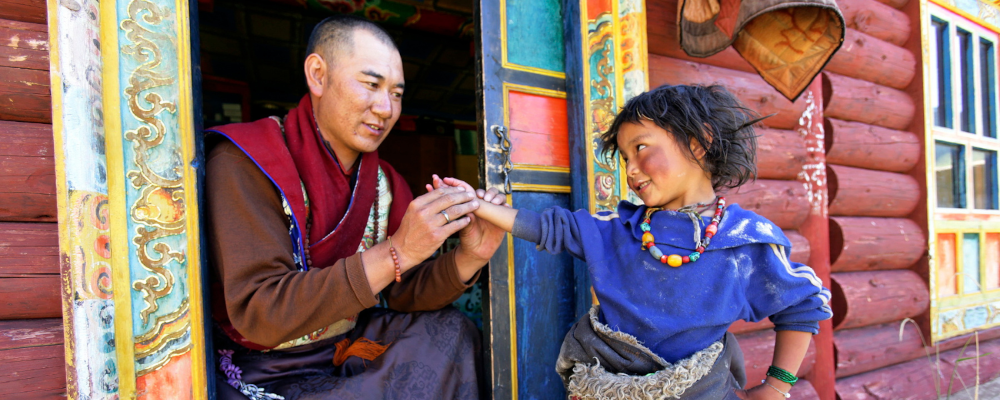
The holiday season is a time to celebrate the bonds that unite us with our loved ones and to demonstrate kindness.
These moment of sharing are essential and allow us to develop an altruistic state of mind, but they can often be conditioned by institutionalized over-consumption which diminishes the experience of true relationships, depletes planetary resources and undermines the social conditions of many. According to Qqf1, only 7% of the toys commercialized in France are made there. In the European Union, 85% of all toys sold come from China, as well as half of the goods deemed dangerous for consumers2.
The end of year celebrations are an opportunity to look into how our habits are conditioned by consumerist ideals and transform them. Becoming aware of this allows us to place these festive moments in a more holistic and altruistic dynamic, bringing together economic, environmental and social considerations. Being lucid about our consumption habits allows us to rethink our actions and to experience happiness and authentic sharing.
The time has come to become fully aware of the limits of material values. We are dealing with many problems that could be avoided if only we acted with greater discernment. But how can we make this will to change effective? What stand should we take? It is not only a matter of promoting one practice or inhibiting another, but instead realizing the need to act purposefully and simply, by reconsidering how we give, in order to cultivate the bonds that bring and keep us together. It does not entail refraining from giving, but rather transforming the idea of a merely material gift into a present with meaning. And moving from a quantitative to a qualitative approach isn’t necessarily difficult: in terms of material gifts, we can pay particular attention to the place and method of manufacture by giving priority to local crafts, second-hand goods, home-made products and furoshiki3 or recycled paper4 for the wrapping.
In concrete terms, new ways of giving can consist in making a gift ourselves, in favoring wooden toys and other presents from the solidarity economy, or in offering a plant, a unique experience or a contribution that would be both useful and meaningful, such as making a donation in the recipient’s name to an NGO whose cause resonates particularly with that person.
Taking the time to reflect on the real needs of our loved ones can contribute to the welfare of all living beings – human beings included – while offering them meaningful satisfaction.
These moment of joy are also an opportunity to remind ourselves that there are other sources of happiness. Offering time and affection has greater value than offering unnecessary objects. The race to the superfluous in affluent countries is a major factor of environmental degradation. For instance, a person in North America emits 200 times more CO2 than one in Zambia. The end of the year celebrations are an opportunity for each of us to act efficiently and simply, changing how we give by keeping in mind the stakes of our time and being really present for those we love.
Becoming aware of our mindless habits induced by the consumerist culture and reconsidering them shoud not be seen as a constraint but rather as responsible freedom: it is the most beautiful gift that we can offer to our loved ones, to the human community and to future generations, including the other 8 million animal species. For what good is giving if it is at the cost of animal suffering? Generosity can in fact contribute to the advent of a better and more compassionate human society. As my friend Christophe André says, “recycling love is a beautiful way to transmit”. So let’s recycle and offer this love, these bonds that constitute the experience of authentic happiness. A change of culture is possible if we use our capacity to act and persevere together with discernment in the right direction.
1 Qqf produces computer graphics in collaboration with NGOs and companies committed to environment preservation and the protection of human beings.
2 Le guide pour un noël au naturel – Qu’est-ce qu’on fait ?
3 Traditional Japanese wrapping with fabric
4 According to Qqf, 20,000 tons of gift wrap are used each year, which corresponds to the felling of 380,000 trees.